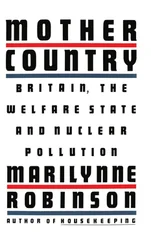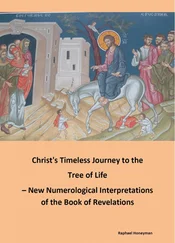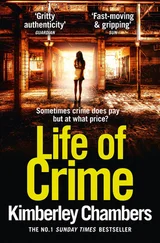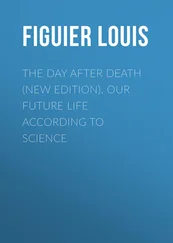managers, teachers and others who attempt to explain
the workings of the welfare state to ignorant hacks.
Without them the reporting of the subject would be
even worse than it is.
Social reform is a process, not an event: a kind of drama.
David Donnison, The Politics of Poverty (1981), p.viii
I do not agree with those who say that every man must look after himself, and that intervention by the state … will be fatal to his self-reliance, his foresight and his thrift … It is a mistake to suppose that thrift is caused only by fear; it springs from hope as well as fear. Where there is no hope, be sure there will be no thrift.
Winston Churchill, Liberalism and the Social Problems (1909), p. 209
‘Two nations: between whom there is no intercourse and no sympathy; who are as ignorant of each other’s habits, thoughts, and feelings, as if they were dwellers in different zones, or inhabitants of different planets; who are formed by a different breeding, are fed by a different food, are ordered by different manners, and are not governed by the same laws.’
‘You speak of –’ said Egremont hesitatingly, ‘the rich and the poor?’
Benjamin Disraeli, Sybil (1845), Book II, chapter 5.
When the evidence changes, I change my mind. What do you do?
Cod quote attributed to John Maynard Keynes
Contents
Title Page
Copyright
Dedication
List of Illustrations
Preface
Preface to the Third Edition
Introduction
PART I THE PIPERS AT THE GATE OF DAWN
1‘Thank you, Sir William’
2‘From cradle to grave’
3A very British revolution
PART II THE AGE Of OPTIMISM: 1942–51
4Butler – Education
5Butler’s legacy
6Bevan – Health
7‘With a song in my heart’ – Health and Social Security
8‘The Tremendous Tory’ – Housing
9The Final Foundations
10Conservatives, Consensus and the New Jerusalem
PART III CONSOLIDATION: 1951–74
11‘You’ve never had it so good’: Conservatives 1951–64
12Hope springs eternal: Labour 1964–70
13The Dawn of Doubt: Labour and Conservatives 1949–70
14The Tories’ last hurrah: Conservatives 1970–74
PART IV THE TIME OF DISILLUSION: 1974–79
15It was getting colder by the hour: Labour 1974–79
16‘We were wrong all along’: Conservatives 1974–79
PART V THE WELFARE STATE UNDER FIRE: 1979–92
17Cuts and catastrophes: Conservatives 1979–83
18Fighting Leviathans: Conservatives 1983–87
19Forming the future: Conservatives 1987–92
PART VI RETREAT OR RENEWAL? 1992–2010
20Thinking the unthinkable: Conservatives and Labour 1992–97
21Social security and social exclusion: Labour 1997–2007
22Public services – health, education and housing: Labour 1997–2007
23The Brown caesura: Labour 2007–10
PART VII THREE SCORE YEARS AND TEN
24Austerity bites: The coalition and Conservatives 2010–16
Notes
Select Bibliography
Index
Photos Section
About the Publisher
Illustrations
Plates
‘From cradle to grave …’ The Daily Mirror’s front page, December 2, 1942 (reproduced by permission of Mirror Syndication International)
Sir William Beveridge (Hulton Deutsch)
Health made Bevan’s name, but he was proud of his housing (Hulton Deutsch)
Rab Butler as President of the Board of Education (Hulton Deutsch)
Tony Crosland, Secretary of State for Education and Science (Hulton Deutsch)
Dr Guy Dain and Dr Charles Hill (Hulton Deutsch)
Jim Griffiths talks in 1955 to Richard Crossman (Hulton Deutsch)
The young Barbara Castle at the 1944 Labour party conference
Dr Derek Stevenson (© The Telegraph plc, London 1975)
David Ennals in hospital on the 30th anniversary of the NHS in 1978 (Press Association)
Sir Keith Joseph at the Conservative Party Conference in 1985 (Richard Open/Camera Press)
Norman Fowler in 1986 (The Independent/Brian Harris)
Roy Griffiths (Universal Pictorial Press & Agency Ltd)
Kenneth Clarke and Michael Portillo (The Independent/Edward Sykes)
Bevan’s council housing in Hainault and newly modernised bathroom and unmodernised washing facilities in flats on the LCC’s Millbank Estate (Greater London Record Office Photograph Library)
Ronan Point in 1968 (ANL/REX/Shutterstock)
Houses in St Paul’s Cray (Peter Van Arden)
Child in hospital in 1930s (Hulton Deutsch)
‘Babies under glass’ in 1944 (Hulton Deutsch)
Modern intensive care (By Ian Miles-Flashpoint Pictures/Alamy Stock Photo)
First family allowance day in Stratford, East London, 1946 (Hulton Deutsch)
Social Security Offices of the 1980s and 2000s (Benefits Agency/Photo by Jeff overs/BBC News & Current Affairs via Getty Images)
Classes at snowsfield Primary school in 1944 and 1954 (Greater London Record office Photograph Library)
Class at snowsfield Primary school in 1994 (snowsfield Primary School)
Integrated Illustrations
Beveridge Fighting the Five Giants by George Whitelaw published by the Daily Herald (© Mirror syndication International) page 12
‘Labour Isn’t Working’ (Conservative Party/Maiden outdoor) page 354
‘Come Out the Boy — Whose Throwing Things’ by Gerald scarfe published by the Sunday Times, 22 November, 1987 (Centre for the Study of Cartoons and Caricature, University of Kent, Canterbury) Page 439
‘Mrs Thatcher’s Plans for the NHS’ (BMA/Abbot Mead Vickers BBDO Ltd) page 470
‘This is the road’ by David Low published by the Evening Standard, 27 January 1950 (© Solo syndication/Centre for the Study of Cartoons and Caricature, University of Kent, Canterbury) page 499
Preface
There are undeniable structural difficulties in writing a narrative account of five or six not always closely related subjects across seventy years. The approach here has broadly been to break the story up by government and divide it again by subject – education, health, social security, for example. But a word of warning is necessary. Narrative thrust has been given precedence over organisational tidiness. Bits of subjects therefore crop up in places other than under their specific headings, particularly in the later chapters, where themes as well as the story are pulled together. They also appear out of their strict chronology. So to take just one example, the development of second pensions is dealt with in the late 1950s but not mentioned again in detail until the mid-1970s when what happened to failed schemes from the sixties and early seventies is discussed. Anyone, therefore, attempting to follow a particular subject rather than read the whole book would need to combine section headings with both a reading of the top and tail of each chapter, and judicious use of the index.
A note about titles is needed. I have used what felt right, which means inconsistency. Later knighthoods and peerages are therefore frequently ignored (I know who Ted Short is, but struggle to place Lord Glenamara). Conversely, where someone has long been ‘Sir’ or ‘Lady’ somebody I have tended to use the title even ahead of their elevation to it. I hope no individual feels insulted. Scotland, Wales and Northern Ireland will, alas, because like so many British histories this is effectively England’s story with both the wrinkles and the larger differences elsewhere largely avoided. I offer as a poor excuse lack of space and the way the British government assembles its statistics.
Читать дальше
![Nicholas Timmins The Five Giants [New Edition]: A Biography of the Welfare State обложка книги](/books/701739/nicholas-timmins-the-five-giants-new-edition-a-cover.webp)











